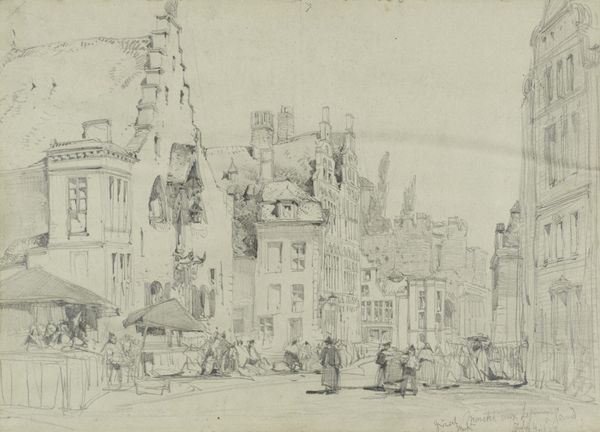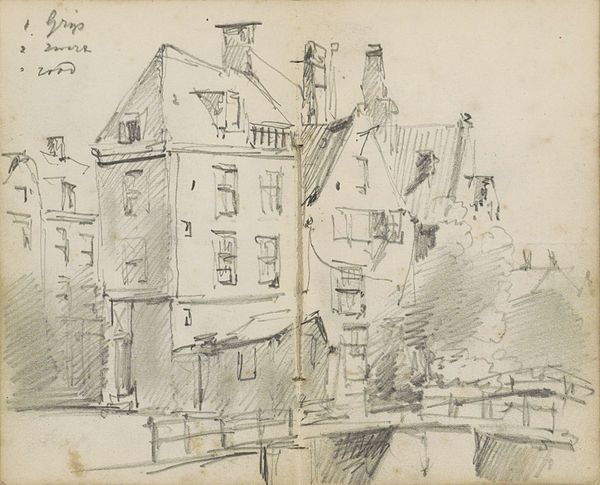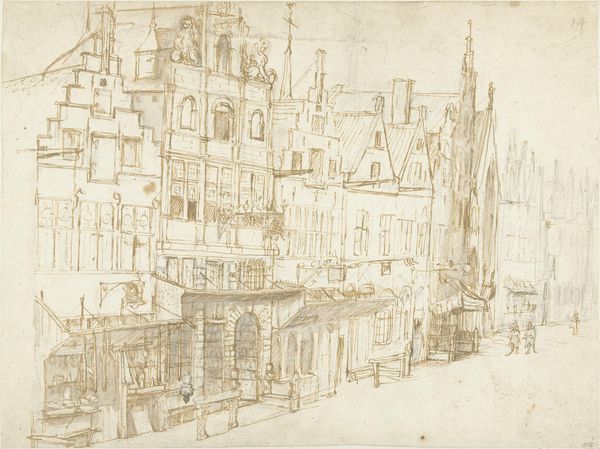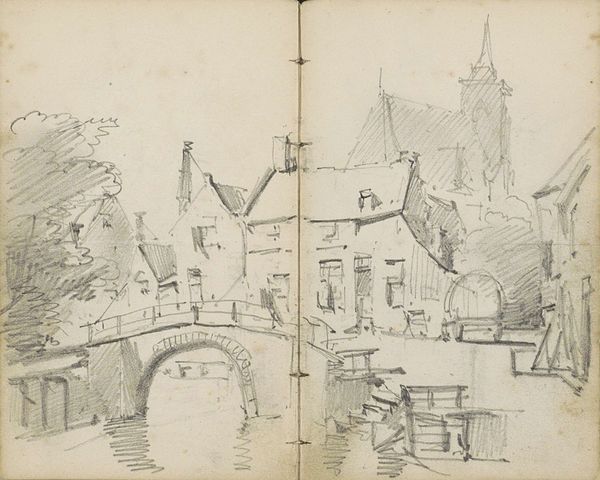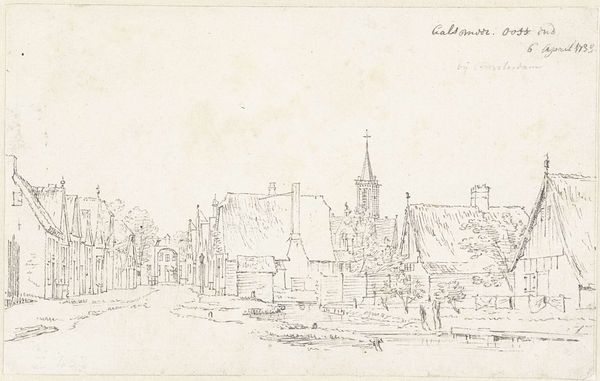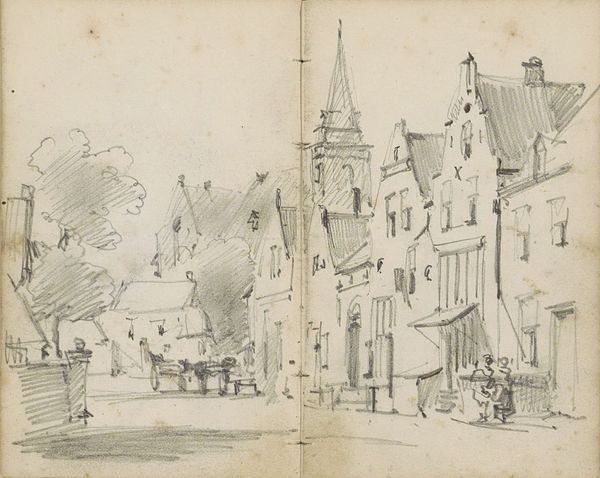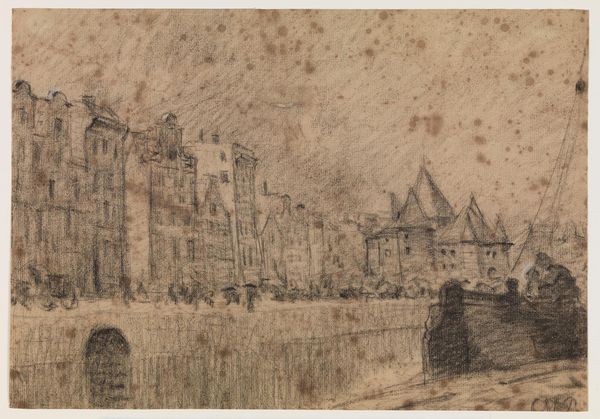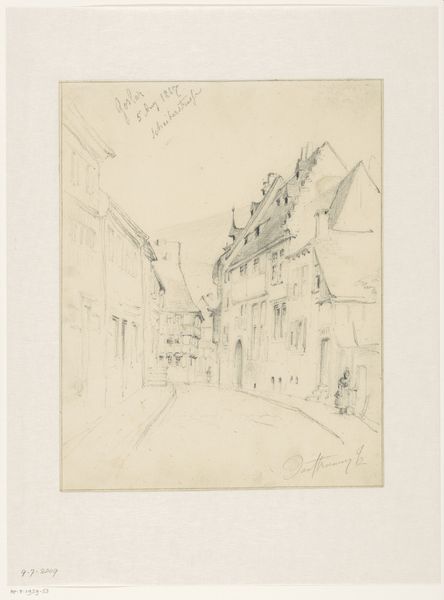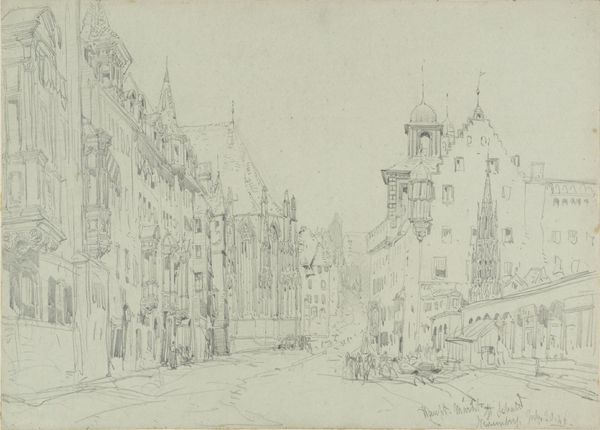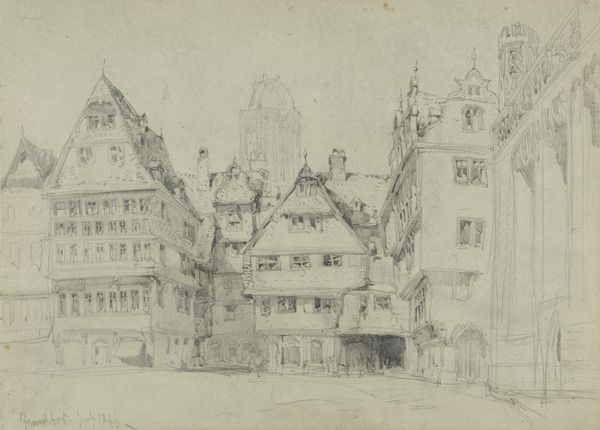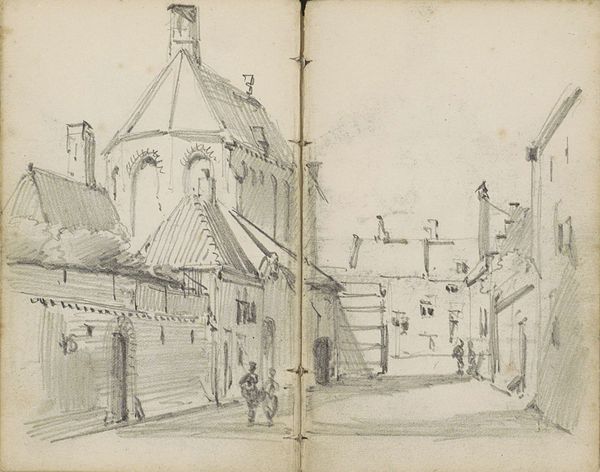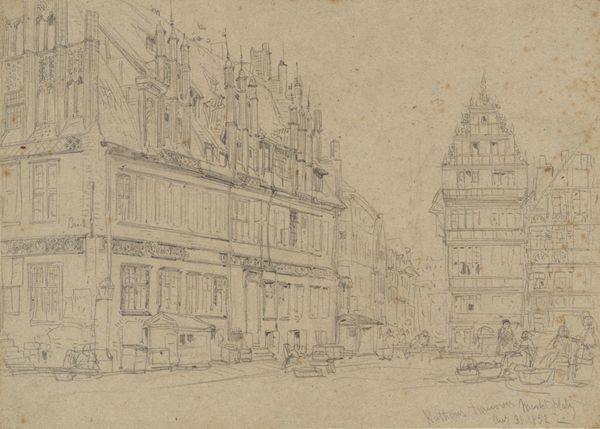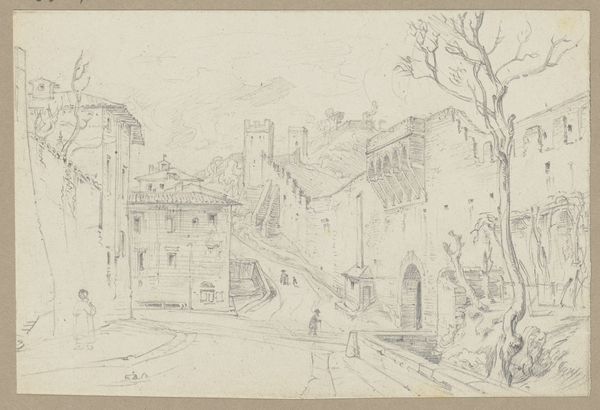
Stadsgezicht met een brug over een gracht en een kerktoren 1849 - 1895
0:00
0:00
drawing, pencil
#
drawing
#
amateur sketch
#
quirky sketch
#
dutch-golden-age
#
pen sketch
#
sketch book
#
landscape
#
personal sketchbook
#
sketchwork
#
pen-ink sketch
#
pencil
#
pen work
#
sketchbook drawing
#
cityscape
#
sketchbook art
#
realism
Copyright: Rijks Museum: Open Domain
Curator: This is Willem Koekkoek's "Stadsgezicht met een brug over een gracht en een kerktoren," which roughly translates to "Cityscape with a bridge over a canal and a church tower," dating somewhere between 1849 and 1895. It’s currently held here at the Rijksmuseum. Editor: It's so delicate. Almost ethereal, really. There's a dreamlike quality to the composition and the monochromatic shades, making it feel very tranquil. Curator: Koekkoek crafted this using both pencil and pen. Notice how the rapid strokes create textures, especially in the buildings and foliage, showcasing a technique for efficiently capturing the scene. It shows the tools available for even mundane activities, such as leisurely city tours. Editor: Indeed, but consider what such a scene signifies within the period it was produced. Cityscapes during this era were often symbols of bourgeois pride and economic prowess. The church in the backdrop subtly implies a certain societal structure and a tacit acknowledgement of religion. Curator: Precisely, the materiality is also key to consider. Drawings such as this, even if they’re studies for later works, offer glimpses into the everyday lives of artists during the period, providing insights into their practice that finished canvases might obscure. The raw nature and humble materiality of pencil and paper can bring us back to the very start of artistic ingenuity. Editor: But let’s not dismiss the human element—the figures on the bridge. Are they simply incidental? Or do they, as a representation of the working class, contribute to the broader narrative about labor, urbanization, and social strata during this period of vast urban transformation? This could open us up to discourses around access and representation. Curator: Good point. What intrigues me is how Koekkoek handles light. Even with limited shading, he establishes depth and contrast that make the architectural structures feel quite palpable. Editor: I'm left considering the role these urban canals played in commerce, sanitation, and transportation, each facet hinting at a society subtly defined by the structures within the image. Curator: Thinking about the pen strokes, the paper grain, all of the immediate choices involved here, give a strong impression of 19th-century artistic work. Editor: Ultimately, by interpreting its subtle components and historical milieu, one can appreciate the confluence of commerce, faith, and daily existence captured within its lines.
Comments
No comments
Be the first to comment and join the conversation on the ultimate creative platform.
